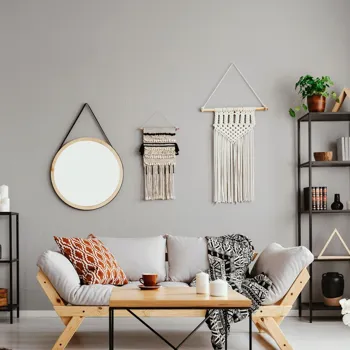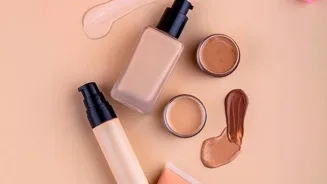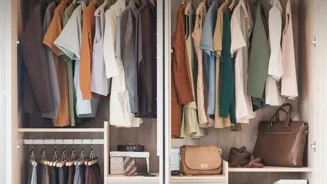Unleash Your Style: Master the Art of Mixing Patterns! Dive into this guide for bold looks & vibrant spaces
Mixing patterns can seem daunting, like trying to solve a particularly tricky maths problem. But
fear not, fashion enthusiasts and home decor aficionados! The art of pattern mixing is achievable, even for those who think they have two left thumbs when it comes to design.
It’s all about understanding the underlying principles and having a dash of confidence to experiment. When done right, mixing patterns injects personality, vibrancy, and a unique touch into your wardrobe or living space, transforming the ordinary into something truly extraordinary.
Treat patterns like colors, balance dominant with secondary for visual interest
The golden rule to remember is to treat patterns as you would colours. Just like colours, patterns have different weights and scales. Start by identifying a dominant pattern, one that you absolutely love and want to showcase. This will be the anchor around which you build your other pattern choices.
Think of it as the lead singer of your band – the one that sets the tone and direction. Then, introduce secondary patterns that complement the dominant one, but don't overpower it.
A clever trick is to vary the scale; pair a large-scale floral print with a smaller geometric pattern, or a bold stripe with a delicate polka dot. This creates visual interest without overwhelming the eye.
Consider color harmony for cohesive decor with varied patterns sharing a common palette
Next, consider colour harmony. Even seemingly disparate patterns can work together if they share a common colour palette. For instance, a floral print with shades of blue and green can beautifully complement a striped cushion with similar hues.
If you're feeling adventurous, try a monochromatic scheme, mixing different patterns in varying shades of the same colour. This is a particularly elegant and sophisticated approach.
Remember, a coherent colour story is the glue that holds the whole look together, preventing it from appearing chaotic or mismatched. It's like the secret ingredient in your grandmother's famous recipe – you might not be able to pinpoint it, but you know something special is happening.
Texture adds depth to patterns, like music instruments in a band
Now, let's talk about texture. Texture plays a crucial role in adding depth and dimension to your pattern mix. Think about contrasting a smooth, sleek fabric with a textured weave, or a shiny surface with a matte one.
For example, a silk scarf with a vibrant print can look stunning against a cotton shirt with a subtle stripe. Or, in your home, a velvet cushion with a geometric pattern can provide a luxurious contrast to a linen sofa with a floral design.
By incorporating different textures, you create a more tactile and engaging visual experience. It's like adding different instruments to your band – each one contributes its unique sound to create a richer and more complex melody.
Experiment with pattern mixing in fashion and home decor to find your style
Don't be afraid to experiment! The best way to master the art of pattern mixing is to try different combinations and see what works best for you. Start small by mixing patterns in accessories, such as scarves, bags, or shoes.

Or, in your home, begin with cushions or throws before committing to larger pieces of furniture. Take photos of your combinations and step back to assess them objectively. Ask for feedback from friends or family members whose style you admire.
Remember, there are no hard and fast rules – ultimately, it’s about creating a look that reflects your personal taste and style.
Balance patterns with solid colors for a harmonious look
Finally, remember to balance your pattern mix with solid colours. A solid-coloured wall or piece of furniture acts as a visual break, preventing the patterns from becoming overwhelming. Solid colours also provide a grounding effect, anchoring the look and creating a sense of calm.
Think of it as the bass line in your band – it provides the foundation that allows the other instruments to shine. A well-placed block of colour will allow the patterns to sing without creating a cacophony.
So, go ahead, embrace the art of pattern mixing and create a space or wardrobe that is as unique and vibrant.
Consider the room or occasion
The type of patterns you choose should be appropriate for the setting. A bold, eclectic mix might be perfect for a living room or bedroom, but a more subdued approach might be better suited for a formal dining room or office.
Similarly, a vibrant pattern mix might be ideal for a party outfit, while a more subtle approach might be more appropriate for a work event.
Pay attention to the scale of the patterns
As mentioned earlier, varying the scale of the patterns is crucial for creating visual interest. A good rule of thumb is to pair one large-scale pattern with two smaller-scale patterns.
Don't be afraid to break the rules
Ultimately, the most important thing is to create a look that you love. If you find a combination of patterns that you think works, even if it breaks all the "rules," go for it! These are simple tips, to ensure the look is good and vibrant.
Mixing patterns is an art form to be learned and mastered
In conclusion, mixing patterns is an art form, but it’s also a skill that can be learned and honed with practice. By understanding the basic principles of colour harmony, scale, texture, and balance, you can create stunning and personalized looks that reflect your unique style and personality.
So, be confident, be creative, and have fun experimenting with different patterns! With a little bit of practice and a dash of boldness, you'll be mixing patterns like a pro in no time. Now go forth and colour your world!










